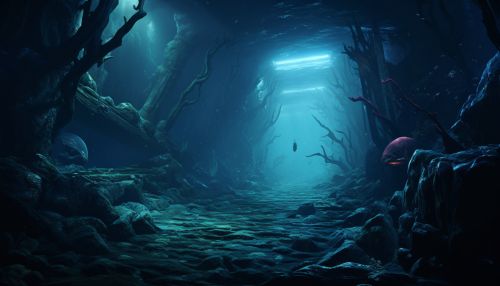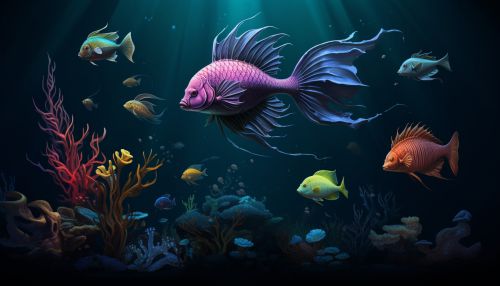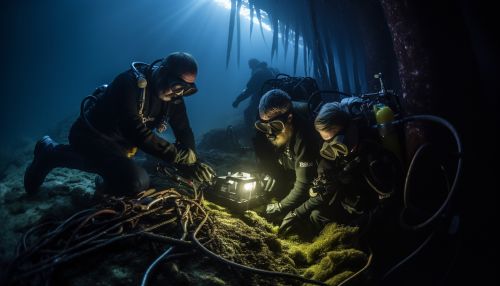Abyssal Zone
Introduction
The Abyssal Zone is a layer of the oceanic zone, lying between 4000 meters (13,000 feet) and 6,000 meters (20,000 feet) below the ocean surface. It remains in perpetual darkness and is subject to extremely high pressures, low temperatures, and low oxygen levels. The abyssal zone is the largest habitat for life on Earth, covering more than 50% of the Earth's surface, and is home to a variety of unique and mysterious creatures.
Physical Characteristics
The abyssal zone is characterized by its extreme conditions. The pressure in the abyssal zone can reach up to 11,000 pounds per square inch (psi), over 1000 times greater than at sea level. The temperature is near freezing, typically around 2 to 3 degrees Celsius. The oxygen levels are also very low, with concentrations of dissolved oxygen in the bottom waters typically less than 0.5 milliliters per liter[^1^]. Despite these harsh conditions, a variety of organisms have adapted to survive in this extreme environment.


Biological Characteristics
The abyssal zone is home to a diverse array of organisms, many of which have unique adaptations to survive in this extreme environment. These include bioluminescent organisms, which produce their own light through a chemical reaction, and organisms with large eyes to capture as much light as possible. Many organisms in the abyssal zone also have slow metabolic rates to conserve energy in this food-scarce environment[^2^].
Ecology
The abyssal zone plays a crucial role in the global carbon cycle. Dead organic matter from the upper layers of the ocean sinks to the abyssal zone, where it is broken down by bacteria and other detritivores. This process helps to sequester carbon in the deep ocean, preventing it from being released back into the atmosphere[^3^].


Exploration
The exploration of the abyssal zone has been limited due to its extreme conditions. However, advances in technology have allowed scientists to explore this mysterious part of the ocean. Submersibles, remotely operated vehicles (ROVs), and autonomous underwater vehicles (AUVs) have been used to study the abyssal zone, providing valuable insights into this largely unexplored part of the ocean[^4^].
Threats and Conservation
Despite its remote location, the abyssal zone is not immune to human impacts. Deep-sea mining, pollution, and climate change pose significant threats to the abyssal zone and its inhabitants. Conservation efforts are underway to protect this unique and important part of the ocean[^5^].


See Also
References
[^1^]: Smith, K.L. (2002). "Abyssal Environment and Ecology of the World Oceans". Wiley-Blackwell. [^2^]: Herring, P. (2002). "The Biology of the Deep Ocean". Oxford University Press. [^3^]: Glover, A.G., and Smith, C.R. (2003). "The Deep-Sea Floor Ecosystem: Current Status and Prospects of Anthropogenic Change by the Year 2025". Environmental Conservation, 30(3), 219-241. [^4^]: Thiel, H. (2003). "Anthropogenic Impacts on the Deep Sea". Springer. [^5^]: Ramirez-Llodra, E., et al. (2011). "Man and the Last Great Wilderness: Human Impact on the Deep Sea". PLoS ONE, 6(8), e22588.
